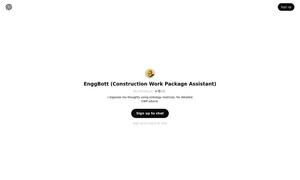
Discover the Best AI Tools to Boost Your Productivity
Find the Best AI Tools to Optimize Your Work and Personal Tasks
Best Construction AI Tools in 2024
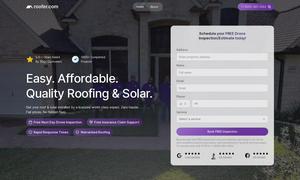
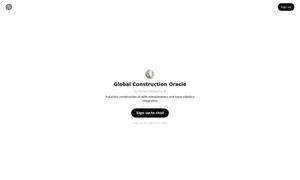
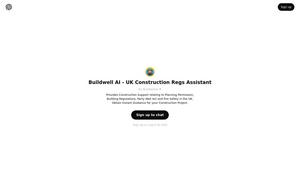
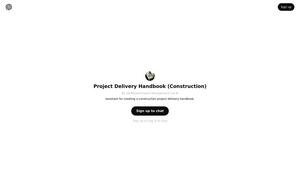
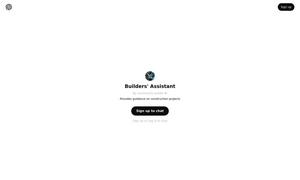
What is Construction
The Construction Category in the AI Directory focuses on innovative solutions tailored for the construction industry. It streamlines project management, enhances safety, and boosts efficiency. Key benefits include real-time data analytics and predictive modeling, helping companies optimize resources and improve project outcomes effectively.
How Construction works
The Construction Category involves integrating AI technologies into construction workflows. Users typically begin by selecting the relevant AI tools for their project's requirements. Next, they input data such as project specifications, timelines, and resource allocations into the system. The AI analyzes this information, providing insights and forecasts that assist in decision-making, scheduling, and optimizing resource use. Unique methods may include real-time monitoring and predictive analytics to address potential delays or issues, ultimately enhancing overall project efficiency.
What are the advantages of Construction?
The advantages of the Construction Category are numerous, emphasizing efficiency, safety, and practicality. By incorporating AI solutions, construction professionals benefit from enhanced data analytics, which leads to better decision-making and resource allocation. Additionally, the ability to predict project demands and potential challenges not only saves time and costs but also improves safety protocols on-site, showcasing its unique value to the industry.
Key Features for Construction
Data-Driven Project Optimization
Data-driven project optimization is a standout feature of the Construction Category. This functionality harnesses real-time analytics to improve resource allocation and scheduling, minimizing delays and ensuring effective project management. By using AI-driven insights, construction professionals can enhance efficiency and overall project success.
Predictive Maintenance and Safety Monitoring
Predictive maintenance and safety monitoring is another key feature of the Construction Category. This capability provides real-time insights into equipment conditions and site safety, allowing teams to foresee potential failures or hazards. By proactively addressing these issues, construction companies can reduce costs and enhance worker safety.
Enhanced Collaboration Tools
Enhanced collaboration tools are a defining feature of the Construction Category. These tools streamline communication among project stakeholders, ensuring that everyone is aligned on goals, timelines, and progress. By fostering better collaboration, this feature significantly boosts project efficiency and effectiveness.
Use Cases for Construction?
Typical use cases for the Construction Category include project planning, risk assessment, resource management, and quality control. AI tools help project managers analyze historical data to project future timelines and costs accurately. They also facilitate on-site safety monitoring and compliance checks, ensuring that projects remain on track and adhere to regulatory standards. This versatility in addressing specific construction needs demonstrates its crucial role in modern project execution.
FAQs for Construction
How does the Construction Category improve project efficiency?
The Construction Category improves project efficiency by leveraging AI-driven data analytics to optimize workflows and resource allocation. Construction professionals can make informed, real-time decisions that enhance planning and minimize delays. This leads to timely project completions and cost savings while addressing specific industry needs.
What role does predictive modeling play in the Construction Category?
Predictive modeling in the Construction Category plays a crucial role in forecasting potential project outcomes. By analyzing historical data, it enables professionals to anticipate challenges, allocate resources effectively, and devise contingency plans, substantially enhancing project planning and execution.
In what scenarios is the Construction Category most beneficial?
The Construction Category is most beneficial in scenarios involving large-scale project planning, risk management, and compliance adherence. It helps teams navigate complex project demands, mitigating risks and optimizing resource allocation, ensuring seamless project execution.
What makes the Construction Category unique compared to traditional approaches?
The Construction Category is unique due to its integration of AI technologies that provide real-time analytics and predictive insights, unlike traditional methods. This innovative approach allows construction professionals to enhance efficiency, decision-making, and safety protocols, setting it apart from conventional systems.
What specific functions does the Construction Category offer to users?
The Construction Category offers functions such as project planning, risk assessment, and resource management, tailored for construction professionals. These tools enable users to analyze data effectively, streamline workflows, and enhance safety, meeting the industry's specific demands through advanced technological solutions.
How do users benefit from the collaboration tools in the Construction Category?
Users benefit from collaboration tools in the Construction Category by achieving improved communication and coordination among project stakeholders. This enhanced interaction leads to better alignment on project goals and progress, resulting in increased efficiency, reduced misunderstandings, and ultimately, successful project outcomes.


